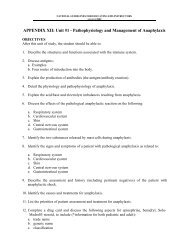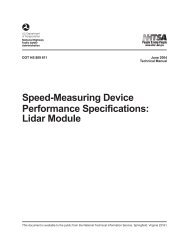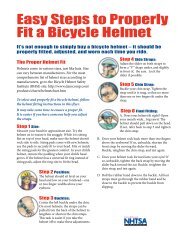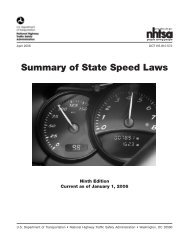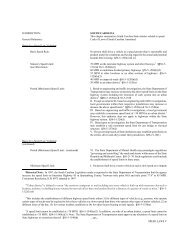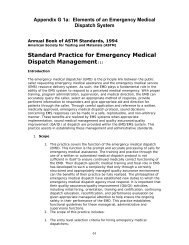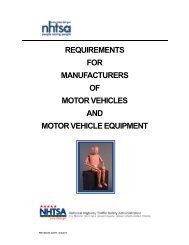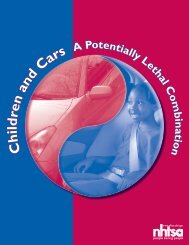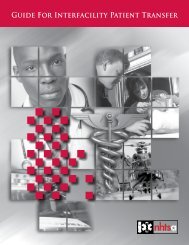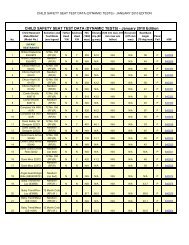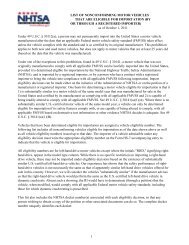The Criminal Justice System: A Guide for Law Enforcement ... - NHTSA
The Criminal Justice System: A Guide for Law Enforcement ... - NHTSA
The Criminal Justice System: A Guide for Law Enforcement ... - NHTSA
You also want an ePaper? Increase the reach of your titles
YUMPU automatically turns print PDFs into web optimized ePapers that Google loves.
As with each of the other expert categories, the initial line of questioning will<br />
address your professional training, background and experience. <strong>The</strong> prosecutor will also<br />
want to know if you are familiar with any of the scientific studies done on HGN (and<br />
there are several). It is certainly a good idea to familiarize yourself with as many of these<br />
studies as possible. 7 Questions will then become specific to your knowledge of the HGN<br />
and, specifically, the protocol used by police:<br />
• Where did you go to optometry school?<br />
• Please briefly describe the curriculum.<br />
• Do you have to be licensed?<br />
• By whom?<br />
• What’s involved in getting a license? Are you now licensed?<br />
• How long have you been licensed?<br />
• Did any of your coursework or additional training include the effects of<br />
alcohol and other drugs on the central nervous system?<br />
• Please describe that training.<br />
• Do certain drugs have the potential to affect eye movements?<br />
• Does alcohol have the potential to affect eye movements?<br />
• Please briefly describe how alcohol affects eye movements.<br />
You will be asked to explain in layman’s terms the meaning and significance of<br />
lack of smooth pursuit, maximum deviation, angle of onset, and nystagmus. Simple<br />
analogies can be critically important: “Lack of smooth pursuit is similar to a car’s<br />
windshield wiper dragging across a dry windshield—it catches a little along the way<br />
instead of moving in one smooth arc as it does on a wet windshield.” Additional<br />
questions may include whether or not HGN is affected by contact lenses, poor eyesight,<br />
or lighting conditions (“Could the officer’s flashlight shining in the defendant’s eyes<br />
cause HGN? Or the flashing lights on top of the patrol car?”).<br />
You may also be asked to discuss the differences between HGN and other types<br />
of nystagmus—what causes them and how they differ in appearance. You will be asked<br />
about the use of HGN testing in your practice, and its use as a test employed by police:<br />
• Are you familiar with the test used by police?<br />
• Is it similar to anything you use in your practice? How is it similar? How<br />
is it different? Do these differences affect the results of the police test?<br />
• In your opinion, is this a test which can be taught to and correctly used by<br />
police?<br />
Finally, one very important question will be “Do you have an opinion as to<br />
whether the presence of HGN is a reliable indicator of the use of a central nervous system<br />
depressant, such as alcohol?” Having answered that question and a couple of follow up<br />
questions addressing the specific case, you will then be “turned over” to opposing<br />
7 For additional in<strong>for</strong>mation on HGN scientific studies contact the National District Attorneys<br />
Association’s National Traffic <strong>Law</strong> Center at trafficlaw@ndaa.org or phone: 703.549.4253<br />
24



